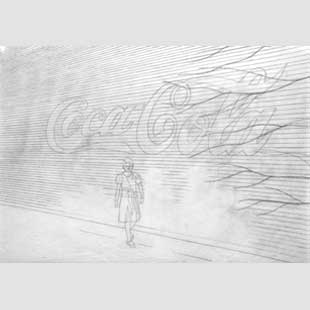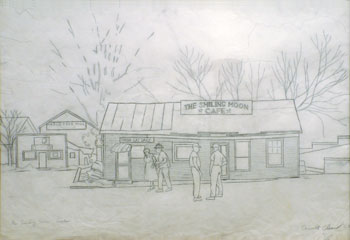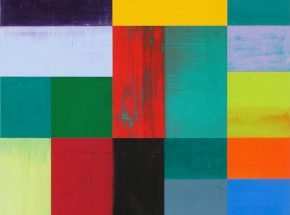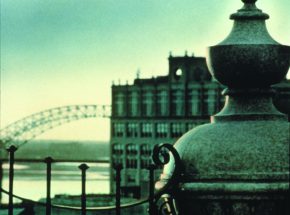

Carroll Cloar was born in 1913, outside Earle, Arkansas. He lived on a cotton farm with his parents, two older brothers, and an older sister, who unfortunately died young. Cloar was not particularly close to either of his parents. He was fearful of his father, and later would paint him as a large and intimidating man. His relationship with his mother was warmer, but still never very close. However, the wild stories that she told her young son would later influence his paintings.
In high school Cloar won an art award from the James Lee Art Academy of Memphis, Tennessee, and that inspired him to pursue an art career. In 1930 he moved to Memphis to attend Southwestern College (now known as Rhodes College) as well
as the James Lee Art Academy. Cloar soon became overwhelmed with the double workload, and decided to drop out of Lee Academy and continue with his English major at Southwestern. However, he began to feel bored with his studies, and decided to change his major from English to Spanish. In the late 1930s Cloar moved to New York City, where he attended the Art Students League. He received an Edward MacDowell Traveling Scholarship from the league in 1940, and a Guggenheim Fellowship in 1946. After World War II Cloar traveled to Mexico,
but moved back to New York City a year later.
Life Magazine published some of Cloar’s lithographs under the title “Backwoods Boyhood.” The article was the first major recognition of his talent, and greatly influenced him to continue working within the theme of Southern culture. Cloar moved back to Memphis in 1955, immersing himself in everyday life there. He was also close to his home, which was a primary resource for the themes presented in his paintings. Still in search of his own identity, Cloar was particularly interested in depicting childhood memories. Based on memory and photographs, he created a mystical, mythical childhood.
In 1978 Cloar received an Honorary Doctorate degree from Rhodes College, Memphis, and received numerous purchase prizes from the Library of Congress, Washington, D.C., and the Butler Institute, Youngstown, Ohio.
Carroll Cloar’s paintings of Southern culture present a new respect, image, and perspective of the South. Cloar’s work is included in nearly all major American art museum collections, including the Arkansas Arts Center, Little Rock; the Brooklyn
Museum of Fine Art, New York; the Butler Institute, Youngstown, Ohio; the Hirshhorn Museum and Sculpture Garden, Smithsonian Institution, Washington, D.C.; the Metropolitan Museum of Art and the Whitney Museum of American Art,
both in New York City; the Museum of Fine Arts, Boston, and the Williams College Museum of Art, Williamstown, both in Massachusetts; and the Tennessee State Museum, Nashville.



